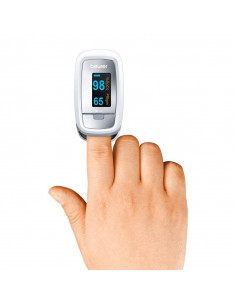What is a good saturation/oxygen level?
A good saturation / oxygen level is essential for a healthy body. But what exactly is a good saturation/oxygen level? Let's take a closer look.
Saturation/oxygen content is expressed as a percentage and indicates how much of the hemoglobin in the blood is saturated with oxygen. In general, a saturation/oxygen level of 95% or higher is considered good. But there are some factors that can influence the ideal saturation/oxygen level, such as age, health condition and height.
In neonates, the ideal saturation/oxygen level can range from 85% to 99%, while in adults a saturation/oxygen level below 90% can be a concern. People who live at high altitudes, such as mountaineers, may have lower saturation/oxygen levels due to the low air pressure.
It is important to remember that saturation/oxygen level is only one indicator of the body's health and not the only one. Other factors, such as blood pressure, heart rate and breathing rate, also play an important role.
A reliable oximeter can help determine your saturation / oxygen level. However, it is always advisable to seek medical advice if you are concerned about your saturation/oxygen level or other health problems.
In short, a good saturation / oxygen level varies depending on various factors, such as age, health condition and altitude. In general, a saturation/oxygen level of 95% or higher is considered good. A reliable oximeter can help determine your saturation/oxygen level, but it is always wise to seek medical advice if you are concerned about your health.
Frequently Asked Questions
A pulse oximeter can give accurate readings if used properly. It is important to follow the manufacturer's instructions and properly position and use the oximeter.
Yes, pulse oximeters can also be used on children. Special children's versions are available that are designed to fit smaller fingers. With each specification of the oximeters you will find whether they are suitable for children.
How often you use your pulse oximeter depends on your specific needs and health condition. Consult a medical professional for advice on how often to use your pulse oximeter.
The oximeter display usually shows oxygen saturation (expressed as a percentage) and heart rate. Some advanced pulse oximeters can also display the perfusion index and other measurements.
It is not recommended to use a pulse oximeter on patients with nail polish or artificial nails, as these may affect the measurement. It is important to keep the fingers clean and free of nail polish and artificial nails when using a pulse oximeter.









